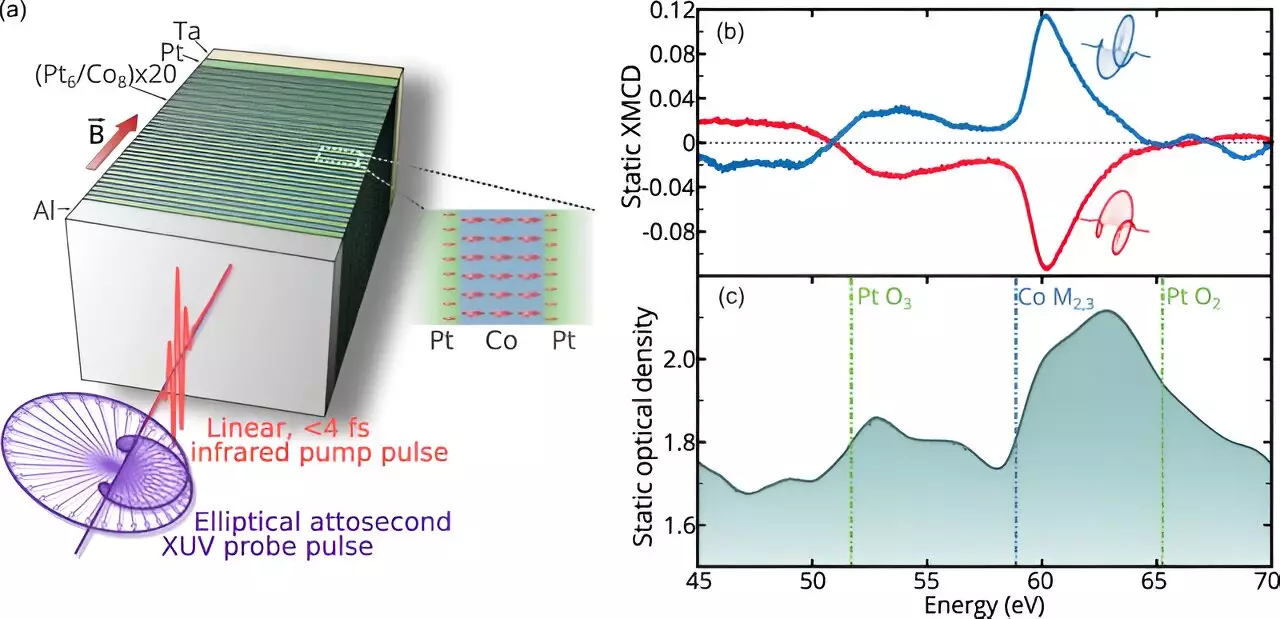Recent advancements in the field of spintronics have heralded a new era with the discovery that spin currents can be generated directly through ultrashort laser pulses. This significant finding, revealed by a collaborative effort of an international team of physicists, was highlighted in their publication in the esteemed journal *Physical Review Letters*. The study illustrates a novel approach that deviates from traditional methods by employing a combination of linearly and circularly polarized laser pulses to manipulate electrons’ spins, culminating in more efficient spin current generation.
Spin currents represent a unique form of electrical flow where the alignment of electron spins is harnessed, presenting an opportunity for developing faster and more energy-efficient electronic devices. The potential for such advancements has long tantalized scientists, as the manipulation of spin instead of electric charge could result in transformative technologies with reduced energy requirements. Historically, the development of usable spin currents has faced challenges due to the inefficiencies associated with indirect generation methods. Previous techniques often utilized lasers to create spin, but they tended to yield electrons with varied orientations, necessitating filtering that wasted both time and energy.
In their groundbreaking research, the scientists constructed a target system composed of twenty alternating layers of cobalt and platinum, each precisely one nanometer thick. By positioning this layered target within a magnetic field directed perpendicularly, they achieved a uniform alignment of electron spins across the materials. Subsequently, a linearly polarized laser pulse was directed at the block followed by a circularly polarized probe laser. This ingenious combination generated pronounced shifts in electron spins between the alternating layers in a mere few femtoseconds—remarkably faster than alternative methods previously utilized.
The results of the experimental design confirmed that the use of lasers induced an abrupt change in the magnetic ordering of both layers within the block, effectively adjusting their magnetic properties. Through meticulous theoretical calculations, the research team also validated their experimental observations, demonstrating a striking concordance between theoretical predictions and actual results. This alignment suggests that the mechanisms by which these spin currents are generated can be reliably modeled, providing a stronger foundation for future studies and applications.
The implications of this research are vast, hinting at a future where electronic devices are not only faster but significantly more efficient, ultimately reshaping the world of electronics. As we stand on the brink of a technological revolution driven by enhanced spintronic applications, this study serves as a critical stepping stone. By streamlining the generation of spin currents, the researchers have set the stage for more sophisticated device architectures, paving the way toward next-generation computing systems that could redefine performance standards in the industry.
In essence, the direct generation of spin currents via tailored laser interactions could be the game-changing development that scientists and engineers have been awaiting—a leap forward in harnessing the quantum properties of electrons for practical applications in our rapidly evolving digital landscape.


Leave a Reply